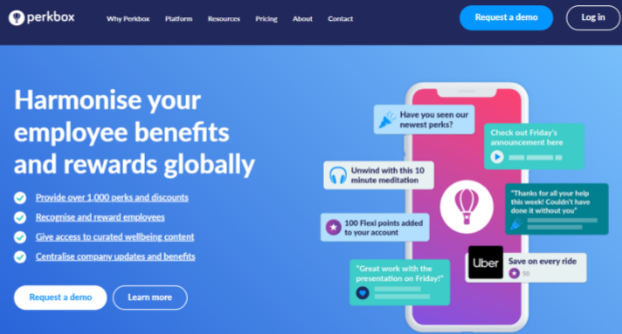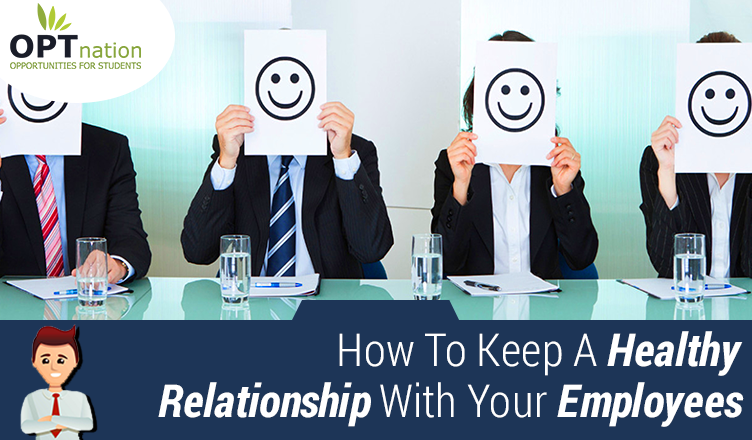Is your company working towards success? If not, you’re probably unable to manage the relationship with employees effectively.
So, the first step to building a great brand is turning your employees into your company’s best ambassadors by making them feel valued.
When employees feel their workplace is like a battlefield, they are more likely to move to companies that focus on maintaining a healthy relationship with employees.
Companies with a friendly work environment feel less intimidated by managers, team members, and colleagues. This work environment enhances productivity, streamlines conflict resolution, and ensures stronger employee loyalty.
If your company is lagging in any of these aspects, it might be worth your time to focus on a healthy employee relationship.
In this article, we discuss different ways of maintaining a healthy employee relationship.
7 Ways to keep a healthy relationship with employees
Here are a few ways using which you can maintain a healthy relationship with your employees:
1. Implement a donation matching program
Who doesn’t like two scoops of ice creams for the price of one? How would you react if your favorite football league wins back-to-back titles by winning just one title?
Having a clone in philanthropy activities can help in achieving double the original. This is called matching gifts, and many organizations worldwide are using a donation matching program.
A donation matching program or a matching gift program is a kind of donation where a business matches their employees’ donations to nonprofit organizations. You can create a donation matching program with the help of Alaya and maximize the impact on your business.
According to research, 71% of employees prefer the giving culture as one of the most important aspects of generating camaraderie at work.
An organization with such a donation program will likely encourage more employees to get involved as donors. When it comes to monetary contributions, many businesses match donations in the ratio of 1:1, 1:2, or sometimes 1:3.

Interestingly, corporate matching programs work wonders for your branding because they enhance employer reputation and branding, improve its culture, increase employee engagement, and encourage employee productivity.
2. Create an employee discount scheme
Many organizations shy away from offering employee discount programs because they’re afraid that the cost won’t justify the investment they make. But organizations fail to understand that a discount scheme is much more than perks and add-ons for employees.
When you create an employee discount scheme, you can build a culture of an employee-friendly company, which eventually translates into measurable positive outcomes for employees and employers alike.

An employee discount scheme can be a winning solution to achieve employee happiness. Offering the right employee discount program can save employees money on anything depending upon how broad the discount rates are.
Companies can tailor-make discount schemes and see a reduction in employee turnover. It can also increase employee productivity and efficiency.
Using a discount scheme, organizations can offer gym membership, discounts on apparel and supplements, free drinks and snacks at café, and free monthly subscriptions to popular apps. Try using PerkBox to increase employees productivity level.
3. Merge the gap of communication
Communication is the building block of a stronger boss-employee or manager-employee relationship. Honest communication gives employees a work culture where employees can openly express their requirements and concerns.
Also, don’t let reliance on digital means of communication like texting, webcams, instant messaging, and emailing hamper your personal interaction. So, get in touch with your employees face to face. For fostering a culture of communication and ensuring employees remain happy, management heads should take out time for regular one-to-one interaction.
Discussing updates on issues related to the company can help you create a healthy work environment. Also, when interacting with employees, avoid using buzzwords to connect with your team members.
Using buzzwords makes them feel detached from everything the manager or supervisor is talking about. Giving employees a chance to speak and share their ideas can encourage a healthy relationship with your employees.
For instance, if a worker is experiencing some challenges in their personal life, it can be helpful to listen to them. When management carefully listens to their employees, they help build relationships.
4. Appreciate your employees
Imagine employees who constantly work hard to meet the company’s goal but don’t receive appreciation for their work. While companies like workaholic employees, not providing them with rewards and appreciation can be challenging.
A simple thank-you gesture can often lift their mood, and they may feel motivated to excel in their job.
So, to enhance productivity and ensure employees meet client goals, it’s essential to give employees the appreciation they need and require.
Patting their back and rewarding them for their work can make them feel special and know how much a company values their work.
Considering this, many firms have turned to designed custom awards. These awards are not just tangible objects, but they represent the company’s recognition of the employee’s hard work and dedication.
Also, when appreciating employees, don’t do it for the sake of doing it. Instead, do it honestly.
This increases engagement and motivation level and helps develop a healthy employee relationship.
One more thing to understand is the tone you use while appreciating employees. Though you want to form a bond with your employees, you must maintain a formal business tone and avoid being personal. Be precise with what you want to say and to whom they’re saying.
5. Conduct performance reviews
Performance reviews may not sound like a way to build strong relationships with employees, but when done right, performance reviews can forge a bond between you and your team.
So, companies looking to build a healthy and robust relationship must schedule performance reviews at least every six months or every quarter.
These reviews focus on the positive aspect rather than only finding negatives in the employee’s performance.
Above all, performance reviews serve as an excellent motivational tool regardless of whether the performance is satisfactory or unsatisfactory.
When employees perform above expectations, they positively contribute to the business environment. So, organizations need to encourage and reward wherever possible.
Alternatively,performance reviews of under-performing employees work as a learning curve for them and encourage them to try harder and do better in their lives.
When you guide underperforming employees, they can feel motivated and excel in their job.
6. Implement autonomy
To foster a culture of healthy relationships, organizations and managers should implement autonomy. Employees need to give space while working.
Dictating your employees and not giving freedom to your employees can cause dissatisfaction.
A company that provides freedom to work can help you build a strong relationship.
Managers can cultivate autonomy by letting employees select their deadlines, choose their schedules, and ask what they consider their departmental goals. Often, managers ask employees’ opinions and act on their feedback to create a workplace where employees like to work.
Also, find out how employees feel about their current level of autonomy.
Asking questions like “Do you feel a sense of ownership when it comes to your work?” or “Do you feel empowered in your schedules and comfortable with a pace at which you want to work.” can help you implement a culture of autonomy.
7. Create a safe space for employees
One of the top reasons employees leave their job is that they don’t feel comfortable at work. Employees who spend close to 40 hours a week in the office can provide a safe working space.
When employees are physically, emotionally, and psychologically safe at work, they’re likely to feel happy when coming to work. Additionally, safe workspaces help organizations confront and deal with inequity permeating and toxic dysfunction in the workplace.
Employees are less likely to feel accepted or respected in such an environment. They could also be experiencing outright harassment or subtle indignities.
So, it’s imperative to create a culture of safe space. Ask them what they feel comfortable doing, whether they’re facing any workplace-related issues, and understand how their week is going.
Creating a safe workplace is essential to keeping a healthy relationship with your employees.
ALSO READ:
How to Transfer from OPT to Green Card Status? (Without H1B)
Needed Tips to Consider While Searching Jobs on OPT
Fostering a healthy relationship with your employees
Keep in mind that the organizational goal shouldn’t be to become the best friend with your employees. Instead, focus on creating a culture that builds trust in the entire workforce.
At the end of the day, the boss-employee relationship works on trust. When building a healthy relationship, don’t try to model your employee/employer relationships on someone else’s ideas.
Find out what works best for your boss-employee relationship. Setting a stronger employee relationship, a priority, you can easily set your business on the road to success.
Building and maintaining good working relationships can help you become more engaged with your workforce and help achieve organizational goals.
If you religiously follow these tips, you’re likely to build an interpersonal work relationship. Focus on introducing relationship-building activities for work, making employees’ jobs enjoyable and stressful.
So, spare some time and foster a culture of relationships in your workplace.
Author’s bio:
Priya Jain is a professional copywriter with 8 years of experience. She has an MBA and engineering degree. When she is not writing, you will find her teaching math, spending her day running behind her toddler, and trying new recipes. You can follow her on Twitter.

